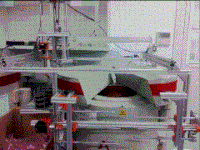Laboratory automation

Laboratory automation is a fancy way of saying that scientists use machines to do their work. Just like how you use a toy car to move around, scientists use machines to mix and test different things in the laboratory.
The machines used in laboratory automation are called robots. These robots are like big computers with arms that can move things around by themselves. Scientists program the robots to do specific tasks like mixing chemicals, testing blood samples or sorting tiny objects.
Robots are faster and more accurate than humans, so they can do many different tasks more efficiently. They also help to reduce errors and the risk of contamination because they can work in sterile environments and wear gloves that humans might not.
Overall, laboratory automation saves time and makes scientific work easier, which helps to improve our understanding of the world around us.
The machines used in laboratory automation are called robots. These robots are like big computers with arms that can move things around by themselves. Scientists program the robots to do specific tasks like mixing chemicals, testing blood samples or sorting tiny objects.
Robots are faster and more accurate than humans, so they can do many different tasks more efficiently. They also help to reduce errors and the risk of contamination because they can work in sterile environments and wear gloves that humans might not.
Overall, laboratory automation saves time and makes scientific work easier, which helps to improve our understanding of the world around us.
